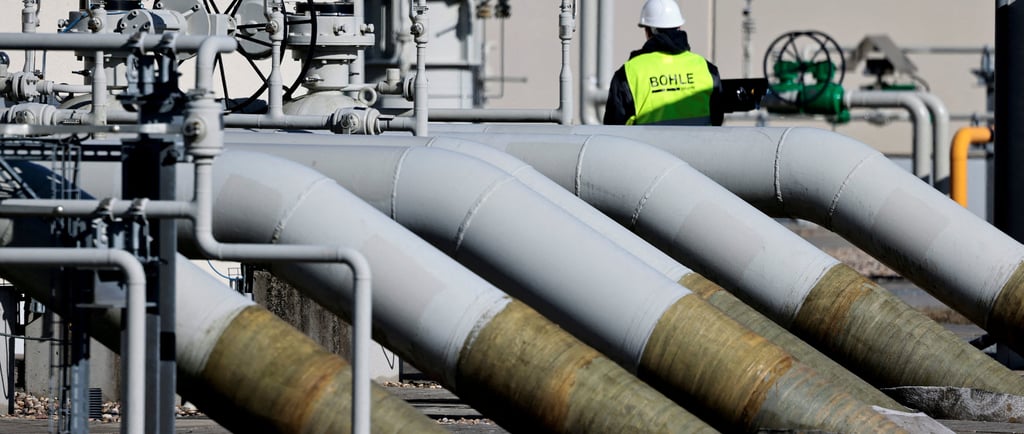Russia: End to Providing Europe with Gas Causing Shift in European Energy Landscape
Russia’s gas supply halt to Europe via Ukraine has set off a chain reaction, cutting off 15 billion cubic meters of gas annually and threatening $6 billion in revenue. As Europe scrambles to replace this lost supply, countries like Moldova and Slovakia face a harsh new reality. European companies will have to find ways to adapt to these changes. How will this crisis reshape business operations, and what opportunities lie ahead?
RUSSIA
Ekaterina Romanenko
1/25/20255 min read


Starting on 1 January 2025, Russia ceased gas supplies to Europe via Ukraine. The halt followed Ukraine's refusal to extend the five-year transit contract with Russia, citing national security concerns.
According to Gazprom, "in connection with the repeatedly and explicitly stated refusal of the Ukrainian side to extend these agreements, Gazprom was deprived of the technical and legal ability to supply gas for transit through Ukraine from 8:00 Moscow time on January 1, 2025." Ukraine's Ministry of Energy confirmed the transit halt, calling it a "historic event" made in the interests of national security. This event has indeed marked a turning point, not only for Ukraine but also for Europe’s energy landscape, reshaping the region's geopolitical and economic dynamics.
The immediate consequences of the halt are clear: according to RBC, Russia loses access to a transit route that delivered 15 billion cubic meters of gas annually to Europe, accounting for roughly $6 billion in revenue, based on an average European market price of $400 per 1,000 cubic meters. Key recipients of Russian gas via Ukraine included Slovakia, Moldova, parts of Italy, Hungary, and Austria, with Austria's Baumgarten hub serving as a critical node for gas distribution across Europe.
Moldova, which heavily relied on Russian gas, now faces severe challenges. With Gazprom halting supplies due to outstanding debts, Moldova must now rely on expensive alternatives like LNG imports and smaller volumes redirected through Turkey and the Balkans.
The European Union has long anticipated the possibility of losing Russian gas supplies through Ukraine and has accelerated its diversification efforts in recent years. The European Council highlights that Europe has increased its liquefied natural gas (LNG) imports, particularly from the United States, Qatar, and other global suppliers. According to the European Commission, in 2023 LNG covered 42% of Europe’s natural gas imports, a sharp increase compared to pre-2022 levels. The growth in LNG infrastructure, such as new terminals in Germany and Poland, has been instrumental in offsetting the loss of pipeline gas from Russia. However, the transition has not been without challenges. The shift to LNG has driven up energy costs, straining businesses and households alike. For instance, energy-intensive industries in Germany and Italy have reported significant increases in operational costs, leading to reduced output in sectors such as chemicals, steel, and automotive manufacturing.
The geopolitical implications of the transit halt are equally profound. Slovakia, one of the countries most affected by the loss of Ukrainian transit, has expressed strong dissatisfaction. Slovak Prime Minister Robert Fico threatened retaliatory measures against Ukraine, accusing Kyiv of ignoring the economic fallout on its neighbors. Some political analysts note that Slovakia’s grievances reflect broader concerns among Central and Eastern European nations about the uneven burden of Europe’s energy transition. While Western Europe can rely more comfortably on LNG and renewables, Eastern and Southeastern Europe remain dependent on Russian flows through TurkStream. This dependency creates a fragmented energy map within the EU, which could undermine its unity in addressing energy security and geopolitical challenges.
Russia, for its part, has pivoted toward Asia, particularly China, to compensate for lost European revenues. The "Power of Siberia" pipeline has facilitated increased gas flows to China, but its capacity remains far smaller than what Europe once absorbed. Experts point out that without new infrastructure projects to connect Russia with markets in Central and South Asia, replacing European revenues will remain a challenge. Gazprom itself has admitted the shortfall. According to a forecast by the International Energy Agency made in 2022, it will take Russia at least 10 years to redirect the volumes of gas previously exported to Europe to Asian markets. This is due to the need for significant investments in new export infrastructure and limitations caused by sanctions and access to technologies.
Adding to the complexity is the re-emergence of Donald Trump on the geopolitical stage. Shortly after the inauguration, he stated that if the conflict in Ukraine doesn’t end soon, he will impose "high levels of taxes, tariffs, and sanctions on anything being sold by Russia to the United States and various other participating countries". This stance could complicate Europe’s energy diversification efforts. American LNG suppliers, already benefiting from increased European demand, stand to gain even more if Trump’s threats materialize. However, heightened U.S. pressure on European countries could also strain transatlantic relations, particularly as some EU members remain hesitant to fully sever ties with Russian energy.
TurkStream, a pipeline delivering Russian gas to Turkey and parts of Southeast Europe, has become a lifeline for countries like Hungary and Slovakia. With a capacity of 31.5 billion cubic meters annually, it offers a partial solution to the loss of Ukrainian transit. However, as AA News reports, reliance on TurkStream further entrenches energy dependencies in the Balkans, complicating Europe’s broader goal of reducing its reliance on Russian energy. Moreover, geopolitical risks surrounding the Black Sea region, where TurkStream operates, add another layer of uncertainty.
For businesses, the situation presents a complex mix of risks and opportunities.
On one hand, the abrupt disruption in gas supplies will likely lead to increased energy prices, especially for energy-intensive industries. For instance, in Germany, wholesale electricity prices have surged, putting additional pressure on manufacturing sectors such as chemicals, steel, and automotive. Similarly, in Italy, businesses relying heavily on energy, like ceramics and steel, are facing rising costs, which are eroding profit margins. The uncertainty in energy supply chains also threatens industries that require stable energy, such as automotive and chemicals, and the overall energy crunch could exacerbate inflation, further complicating the economic landscape for businesses and consumers alike.
On the other hand, the crisis is driving a shift towards renewable energy, with European businesses investing heavily in solar, wind, and hydrogen technologies. The European market for corporate power purchase agreements reached 10.7 GW in 2024, reflecting sustained interest in clean energy solutions. This trend is presenting new opportunities for businesses involved in energy storage, energy efficiency technologies, and green hydrogen production. Companies like Siemens Energy are expanding their hydrogen production capacities, and BASF is investing in carbon capture technologies to reduce its reliance on natural gas, positioning themselves as leaders in the green energy space.
Looking back at historical energy crises, such as the 1970s oil shocks, businesses that diversified their energy sources and focused on long-term resilience strategies were able to weather the storm. The same approach is crucial today. Companies must assess their energy vulnerabilities, explore alternative supply chains, and prioritize sustainability to navigate the evolving energy landscape. While the short-term challenges are significant, the shift towards renewables and energy efficiency offers a path toward a more resilient and sustainable energy future for European businesses.
The current situation presents a range of scenarios for Europe’s energy future. In the best-case scenario, increased LNG imports, renewable energy growth, and enhanced energy efficiency measures could stabilize the market and reduce costs for businesses and consumers. In the worst-case scenario, prolonged supply disruptions and geopolitical tensions could lead to energy shortages, economic instability, and further divisions within the EU.


